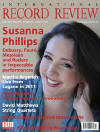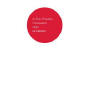Texte paru dans: / Appeared in:
*

International Record Review - (07-08/2012)
Pour
s'abonner / Subscription information
Signum
SIGCD287

Consultez toutes les évaluations recensées pour ce cd
~~~~ Reach all the evaluations located for this CD

This is the first CD I can remember listening to which has quite so much fun with its scene-setting sound effects - over eight minutes of fireworks, fanfares and bells. The occasion? Not a Jubilee, but a coronation; not of a Queen, but of a Doge - the elected head of state of the old Venetian Republic.
So, we are setting our clock back to the sixteenth century as Paul McCreesh and the Gabrieli Consort and Players re-enact the elaborate Coronation Mass of Doge Marino Grimani which took place in the Basilica of St Mark's, Venice on April 27th, 1595.
Hold on ... I'm sure I've been before. I distinctly remember attending this magnificent service back in ... when was it ... 1990. Yes, McCreesh and his team first presented their coronation reconstruction nearly a quarter of a century ago for Virgin Classics. It swiftly became a best-selling recording and one of the group's most popular touring programmes. Of course, after years on the road with it their approach has changed a bit, and so it makes perfect sense to revisit the occasion in this, the 40th anniversary of the death of Giovanni Gabrieli, whose music, along with that of his uncle Andrea, dominates the programme.
This New Venetian Coronation is much more atmospheric than the first ... not just the expanded opening sound effects but also a constant, subtle background of distant footsteps, rustles and activity - the natural ambience of a large cathedral - which help link together all the elements of the programme. Andrea Gabrieli's polychoral Mass remains at the core, growing from the relative intimacy of its opening five-part 'Kyrie', to an eight-part 'Christe', a 12-part 'Kyrie 11' and then a sumptuous 16-part 'Gloria'. In the interview with McCreesh printed in the booklet he tells us that even after all these years he still feels a 'tingle down his spine' in 'Kyrie 11' when all 12 voices suddenly come in after their leisurely contrapuntal opening - me too. I also noticed that the pitch of the music seems to have gone down markedly since 1990. McCreesh confesses that he later realized that he'd transcribed some pieces at too high a pitch (it's all to do with special clefs used simply to avoid ledger lines). So some pieces have now grown in depth and gravitas as a result.
If you already know the first recording, you'll also notice that there's much less large-scale choral singing here than before. McCrecsh now thinks that a great deal of the more complex vocal music was probably sung by ensembles of solo voices, and combinations of voices and instruments. Andrea Gabrieli's O Sacrum convivium gains in intensity, intimacy and impetus with one voice per part, while there's a whole new range of colours to enjoy in Deus qui beatum Marcum now that the choir has been replaced by a couple of falsettists delighting on a bed of eight sackbuts. McCreesh has also made a few changes to the musical line-up, choosing more appropriate trumpet fanfares, adding processional music for shawms, a new canzona by Giovanni Gabrieli, and moving pieces about a bit.
So, if he can make so many changes, what kind of reconstruction is this? Entirely speculative, it seems. Apart from some wonderfully vocative, but vague, descriptions of similar events at St Mark's in earlier years, there's nothing concrete to go on at all, and certainly not a convenient order of service for April 27th, 1595. What does survive, though, are the outlines of the appropriate liturgy: the plainchant, and knowing where the Venetians liked to replace the voice of the priest with an instrumental Canzona or when it was proper for the organs to play. To flesh things out there's lots of appropriate music to choose from written by St Mark's musicians, like the Gabrielis, all published at the time by Venice's busy printing presses.
So really what we get here is an 'imaginative liturgical reconstruction'. It's an ideal way to programme music of the period. Linked together with a connective tissue of chant, liturgical business and bells, the movements of Andrea Gabrieli's polychoral Mass, and
the various motels and instrumental canzonas, now have a context and make a kind of large-scale structural sense.
It's not all singing, though. Instrumental virtuosity was also an important element of the Venetian style and Giovanni Gabrieli's Canzona for ten instruments contains some white-knuckle virtuosity for two players - a cornet and violin - providing us with a little foretaste of the later Venetian concerto. McCreesh reckons that the original recording, and the concerts he's done subsequently, have been partly responsible for an up urge of interest from younger musicians to take up the principal wind instruments of the time: the cornet and sackbut. I'm sure he's right. I used the original 1990 recording in lectures to enthuse my own students - and I'm delighted to see several of them performing here. I always played them the end of the huge four-choir Omnes gentes by Giovanni Gabrieli because it ratchets up the excitement with ringing triple-time 'alleluias' and because the sackbut players give vent to some outrageously deep brass belches ... which I'm delighted to hear they've kept in their new recording.
This is
a hugely charismatic and colourful coronation, and one of those recordings
where it's hard to stop inching up the volume control. McCreesh's new take
on his classic recording is a triumph and even more vivid than the first.
Although recorded at Douai Abbey in Berkshire, it sounds more exotic, as if
the musicians really are arrayed around the galleries and podiums of St
Mark's. Highly recommended to both first- and second-time buyers, and on
track to inspire yet another generation.
Fermer la fenêtre/Close window
Cliquez l'un ou l'autre
bouton pour découvrir bien d'autres critiques de CD
Click either button for many other reviews


